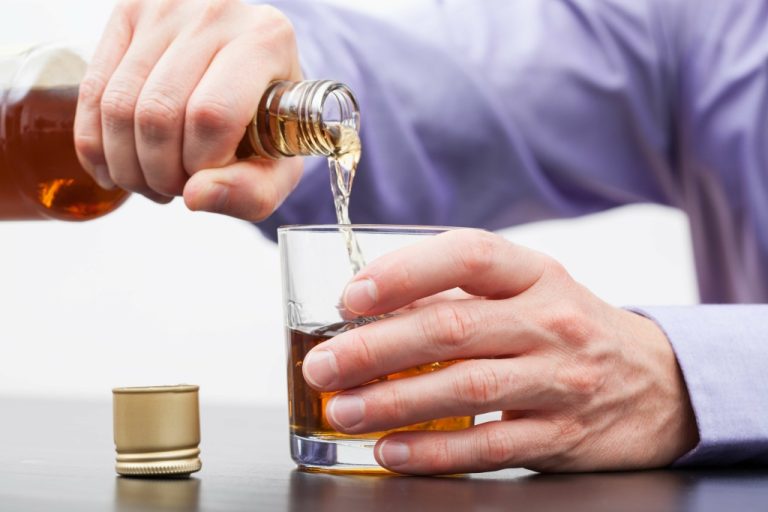When you take a drug, certain genetic factors can increase your risk of developing an addiction. Regular drug use changes your brain chemistry, affecting how you experience pleasure. This can make it difficult to simply xanax addiction stop using the drug once you’ve started. Therapeutic techniques, such as music and arts therapy, and wellness-focused support groups, are beneficial in combatting the psychological impact of an addiction to Xanax.
How long do Xanax effects last in the body and brain?
Brown visited Talbert House, a Cincinnati-based mental health and addiction facility, on Monday to discuss the FEND Off Fentanyl Act. The pills are pressed to look just like a variety of prescription pills. Those that appear to cause the highest risk for unintentional fentanyl exposure are oxycodone, pressed as M30s, and alprazolam, which most people know as Xanax, Palamar said. Fake prescription pills containing fentanyl are pouring into the United States, a new study shows, magnifying the threat of death from overdose nationwide. This page will cover symptoms of a Xanax overdose, what to do if someone is overdosing on Xanax, and how Xanax overdose is treated. Here, you can learn Xanax overdose rates, the risk factors for overdose, and how to prevent overdoses on this drug in the future.
Signs and Symptoms of Alprazolam Abuse
If a person experiences any serious side effects when taking Xanax, they should seek immediate medical attention. Additionally, people who take it every day may develop physiological dependence, meaning that the body requires the medication to function properly. And, as you develop tolerance to the drug (this can happen with any dose), the duration of its therapeutic effects becomes shorter, while the feeling of “comedown” leading to the withdrawal comes quicker. However, even after the symptoms of a Xanax overdose wear off, the consequences to the body may persist, potentially with lasting effects. For example, pulmonary aspiration during a lethargic state can lead to aspiration pneumonia or permanent lung damage.
Xanax Addiction & Overdose Statistics
People use drugs like Xanax to halt a bad psychedelic trip — but “trip killers” also come with risks – Salon
People use drugs like Xanax to halt a bad psychedelic trip — but “trip killers” also come with risks.
Posted: Tue, 30 Jan 2024 08:00:00 GMT [source]
Xanax is the brand name of a drug called alprazolam, which is used to treat anxiety and panic disorders. This medication belongs to a broader class of drugs called benzodiazepines, frequently just referred to as “benzos.” Xanax is considered a potent benzo, and it’s taken as a tablet or an extended-release capsule. People successfully recover from Xanax addictions using both inpatient and outpatient treatment programs. However, people with more severe addictions might need the stability of an inpatient treatment center to recover. The detox and withdrawal from Xanax can cause deadly seizures, so professional guidance is vital during this time of treatment.
They will start to concentrate a lot of their energy on Xanax and its role in their life. Flumazenil is a benzodiazepine antagonist that can be given intravenously (IV) as an antidote in the emergency setting to help reverse the effects of a benzodiazepine overdose. Call your healthcare provider, go to the nearest hospital emergency room, or call for emergency medical help (call 911 in the US) right away if you get any of these symptoms. Physical tolerance https://ecosoberhouse.com/ and addiction are multifactorial processes that involve drug pharmacology, patient factors such as past or current drug use, and social and environmental cues. Xanax is addictive because of how it works in the brain, its short duration of action, and the potent calming and anxiety-relieving effect of the medicine that some people may abuse. Xanax withdrawal can begin within 24 hours after the last dose and symptoms may last between a few days to weeks.

Alprazolam, a medication that may cause physical dependence and, in some cases, addiction, is commonly prescribed. Addiction is characterized by both psychological and physical dependency. To manage the effects of withdrawal on both the mind and body, it is best to taper off benzodiazepines on a schedule that permits decreasing the dosage by 25 percent for every quarter of the withdrawal period.
- Addiction is often due to psychological factors that influence individuals to keep using.
- Medical detox in a rehab facility like The Recovery Village can help a person safely taper their dose while receiving treatment for withdrawal symptoms.
- Some common side effects include headaches, nausea, vomiting, profuse sweating, blurred vision, and convulsions.
- Another concern with Xanax addiction is the risk of overdose, which can result in acute benzodiazepine toxicity.
- Since these symptoms overlap with overdose symptoms of other depressants, however, you should learn to recognize them and call for medical help when necessary.
As a result, users must take Xanax more often or take larger doses each time, increasing the risk of addiction. For individuals who decide to stop taking Xanax, sudden withdrawal can cause severe physical and psychological side effects, increasing the risk of seizures, coma, and even sudden death. Xanax is frequently taken with alcohol, opioids, and other substances, as Xanax can reduce the undesirable side effects of these substances. Taking Xanax with alcohol, illicit drugs, or other medications can increase the risk of sudden death. Combining Xanax with opioids is especially common, with the National Institute on Drug Abuse reporting that more than 30% of opioid overdoses also involve benzodiazepines. Xanax, a benzodiazepine prescribed to treat anxiety and panic disorders, has risen in popularity over the years.
It also can also cause withdrawal symptoms upon abrupt discontinuation, which may lead to a pattern of continued drug use and higher doses to help alleviate symptoms. It can create physical dependence in anyone who uses it for an extended period, for any reason. Once you’re stable and free of any withdrawal symptoms, your doctor can then taper your dose of Valium. Taking Xanax in combination with alcohol can cause life-threatening side effects. Like Xanax, alcohol enhances the effects of GABA on the central nervous system, which can cause impaired coordination, drowsiness, dizziness, and other physical and psychological effects. When an individual combines Xanax and alcohol, the tranquilizing effects of each substance are intensified.
- Most symptoms of Xanax withdrawal are unpleasant and distressing but not life threatening.
- According to the 2016 National Survey on Drug Use and Health, approximately 536,000 individuals between the ages of 18 and 25 had misused tranquilizers within the previous month.
- Treatment centers provide those suffering from Xanax addiction the support they need to find and maintain recovery.
- Review the full product information and discuss this information and any questions you have with your doctor or other health care provider.
- This drug absolutely has the potential for abuse and addiction, so people often wonder what signs to look for in someone on Xanax.
Co-occurring Disorders and Dual Diagnosis Treatment
Studies have shown that individuals with a history of alcohol or opiate use prefer the rewarding effect of Xanax over other benzodiazepines, such as oxazepam or chlordiazepoxide. However, you can become addicted to Xanax even if you take it exactly as prescribed by your doctor. Studies with alprazolam have also shown an increase in dopamine levels in the brain, which are linked to the brain’s reward system.…


 …
…
 …
…